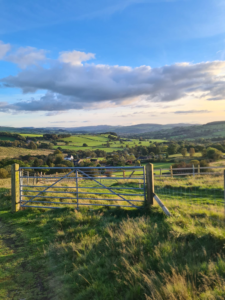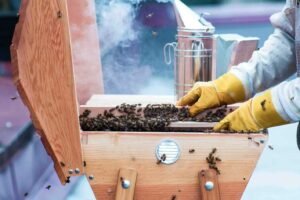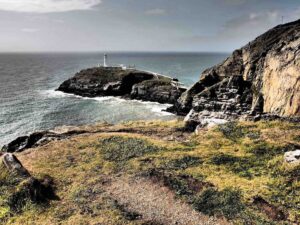The Bosky Blog
1 October, 2024
School communities: How we start and how we carry on
Heather Sargeant

There are so many great things and tricky things about how we start new academic years. There’s the joy of teachers getting to know their new class of learners which is brilliant; a definite honeymoon period where everyone in the class is embracing the novelty of a new teacher, new classroom, new routines; and perhaps a bit of a realisation in weeks 2, 3, 4… that the new year group will take time to be in the place where learning and the classroom will work best. At that point, and as a teacher, I used to recognise once again that how we carry on, i.e. consistency and predictability and positive relationships, take a bit of time and perseverance.
“Coming together is a beginning. Keeping together is progress. Working together is success,” Henry Ford.
3 photos
The first headteacher that I worked for had a brilliant way with words. He was able to expertly tell a story in assembly and was (on several occasions) the brilliant narrator of what I will call the goose teamwork analogy (see below). This is probably deep in the psyche of teachers from my old school and so much so that I recently saw a new book with the v-shape formation of geese on the front and immediately thought of my headteacher – thanks Bryan! So here are three photos and three analogies used in schools and what the shorthand is about our school communities and how they work.

1. Hives (schools characterised by busyness and community)
Photo by Meggyn Pomerleau on Unsplash
No-one can really argue that the output of a hive isn’t good. Honey is great! Some of the key takeaways or parallels of a hive and a school are the structure of a hive (which is multi-layered), the different roles of those within that community, the fact that larvae are nurtured and fed by the community and also the pheromones that influence the activity of the hive. We could think about the atmosphere and culture of a school that is set by the leadership. Hives are productive places and it isn’t a huge leap to know that this is the aim of schools too for their teachers and learners.

2. Geese (schools characterised by teamwork, cooperation and support)
Photo by Alain Bonnardeaux on Unsplash
Back to the goose teamwork analogy! Geese fly in formation which reduces air resistance for those geese behind the leader. The following geese are able to save their energy and then the leading goose takes turns and shares the leadership. So there is shared responsibility, energy and cooperation in this way of flying. The geese honk to encourage one another and beautifully, when a single goose is sick/tired and drops out of formation, two other geese accompany it – it is not left alone. The geese are able to fly further because of their cooperation. What a clarion call for schools and educators to work together.

3. Lighthouses (schools characterised by direction and vision)
Photo by T. Sargeant
In all sorts of weathers, lighthouses have traditionally been a stable presence to guide and direct all craft in the vicinity. The metaphor of the school as a lighthouse offers a view of the school as providing illumination and knowledge that helps us find our path. Lighthouses are also supportive by their warning about the rocky places and their light to show a safe route. They are also full of hope – their message to us is that there is a way forward. I can see these aspects in the role of schools in their community.
I’d love to hear any more analogies and metaphors about school communities or teamwork. Send me a message on Facebook or Instagram or fill in my contact form – it would be great to hear from you!
2 Links
Early Human Ontogeny
Here’s a link that was shared by TeacherTapp in a recent newsletter and I think deserves a lot of airtime and awareness. I, due to my previous training, view this through the lens of speech and language communication needs. It made me reflect on children’s ability to be involved in the discourse and expression required as they grow as humans who understand themselves in the context of other humans (social, cultural and moral beings). This links to our analogies and metaphors for school too! (Seamless segue.)
New BBC Bitesize game ‘My World’
Here’s a new game aimed at the Reception age group or P1 in Scotland. It is a lovely game about exploring a community and helping through missions. This one is worth sharing with parents with children around 4 and 5 years old and teachers of this age group.
1 freebie
I have a freebie for you about cooperation. It’s two images with jigsaws along with the images on their own and the jigsaw on its own. Number the pieces that are the same on the back i.e. write a number 1 on the reverse of the photo and a one on the corresponding shape. Then ask the children to recreate that piece of the jigsaw using whatever media they would like. When everyone has completed their piece, you can put them together as an example of collaboration. We all bring our best and our uniqueness to create something brilliant together. This is perfect for valuing difference and teamwork.
If you use this in your space, then please show me on Instagram and tag #boskypublishing or @bosky_pub *or* feel free to send it on to an educator friend. Or if you head to our homepage, a pop-up appears and you can sign up for our newsletter.
